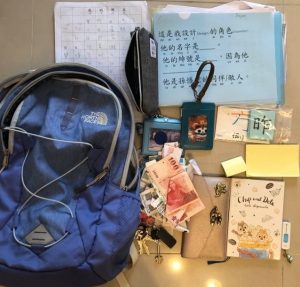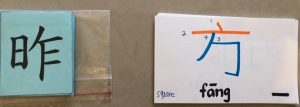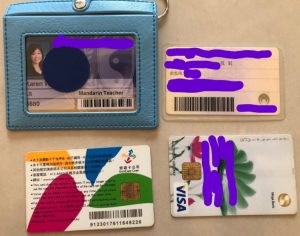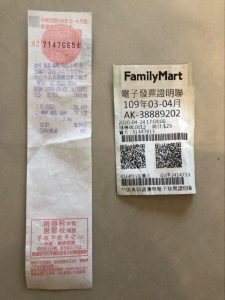
This is the backpack that I carry everyday to work. As an elementary school teacher, many items in my backpack are school related. As I am digging through my backpack to do this assignment, I am surprised to see how “traditional” I am with text-based items but also rely strongly on new technology.
My bag’s essential contents are my wallet, school ID, public transport metro card, smart phone, laptop, wireless mouse, planner, USB, a pencil case and student’s work that I take home to grade. I also found some blank post-its from the bottom of my backpack(in case I need to jot down some notes which indicates that I prefer hand written to using my I-phone note app to do so) and some flashcards(both typed and hand written) that I made for my students for word study. As you can see, the flashcards are written in Mandarin since I’m a mandarin teacher. I teach both Mandarin as a first language and second language, therefore, my flash cards have both English and Mandarin. When I look at the flashcards, I wonder why I didn’t just use printed text since technology is all about efficiency? Then I realized that by writing the texts, I was able to show my students different stroke order using a variety of colors. Moreover, it was faster for me to write down both the English definition and the Mandarin words on notecards, on both sides, without having to go through the trouble of setting the layout if I were to use Microsoft word to create them.

I guess this indicates that I’m still traditional when it comes to written texts. And also, that I’m not very skillful when it comes to technology. I can only perform general tasks using Microsoft tools and Google Drive.
My bag has a lot of cards such as my school ID, the metro card, my ID card, health insurance card and my debit cards. Since I live in Taiwan, most cards have both Mandarin and English printed on them. In Taiwan, you can see many cards with bar codes on them for identification purpose. For instance, I use my school ID to purchase school lunch or snack. There’s a machine I use to add money into my account and when I buy lunch, the cashier simply put my card on a sensor machine and money will automatically be deducted from my account. My personal ID card has a bar code on the back as well. When I need to pick up a package from 7-11 or pick up my masks from a pharmacy, they will scan the bar code on my ID to identify my identity and then provide me with the items. In the past, the word “code” means a block of wood used for writing. But now, it has turn into a system of symbols that we use in technology to “communicate” our daily needs.

In Taiwan, the metro card can have multiple usage. You can put money in your card for transport, but you can also use it as a debit card in any convenient stores or pay for taxis. The card is usually used on sensory devices or card readers. Though I mentioned earlier that I’m not a heavy tech user in a classroom, I find that in my culture, technology is everywhere, and I rely heavily on technology because of the convenience it brings.
I also found many receipts in my bag which indicates that I’m not very organized. But having a closer look at the receipts, it is interesting to see how they have evolved with the advancement of technology. As you can see in the picture, the receipt on the left has items typed and listed. The receipt on the right is smaller, with no items listed, but added bar code and QR codes for the customer to scan and check their purchase.

If an archaeologist looked through my bag in the future, he/she would find things like hand-written notes, even printed flashcards, obsolete, as things will be all digitized and all traceable and organized in one device. They will find out that this is a transition period; from old inscription habits into keyboard typing, audio typing or evening in near future: think and type.



